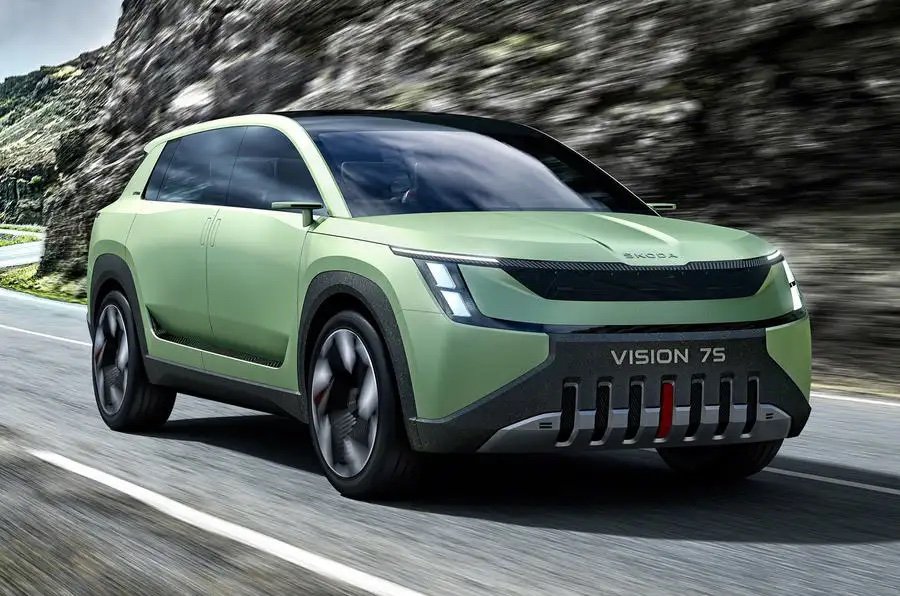Skoda to launch large, seven-seat electric SUV in 2026

Skoda’s new range-topping electric seven-seat SUV will arrive in 2026, topping a new-look, six-car electric car line-up, as the car maker looks to grow its EV registrations to 70% of total sales by the end of the decade.
Effectively serving as an electric alternative to the combustion-engined Skoda Kodiaq, the so-called 'Space' SUV was previewed by the striking Vision 7S concept, which brand boss Klaus Zellmer described as an “entirely new” proposition for Skoda.
A similar size to the current Land Rover Discovery, the MPV will be designed according to the principles of Skoda’s new ‘Modern Solid’ styling language – which will be rolled out to all of its EVs in the coming years, firstly with the 2024 Elroq compact SUV.
The SUV will use the Volkswagen Group's MEB modular platform, and is expected to be fitted with Skoda’s new 86kWh battery – previewed on the concept – for a WLTP range in the high-300s. The concept also boasted a charging rate of up to 200kW, and the production car will follow suit, that functionality having been rolled out to the new Volkswagen ID 7 already.
It is not clear whether the Space will be exclusively a four-wheel-drive proposition, though a twin-motor variant will no doubt be offered - and could produce up to 390bhp, based on the predicted output of the top-rung, 4WD ID 7.
The car will sit atop a totally overhauled Skoda line-up, which will include a Octavia-sized estate, the Elroq compact SUV and a £22,000 city car – twinned with the Cupra Urbanrebel.
One of the most striking features of the Vision 7S concept, that is expected to make it to production are the seven vertical air intakes at both the front and the rear, which feed the cooling system and direct air to the brakes – something Skoda says will feature on its upcoming larger models.
Future Skoda models are also set for an interior shake-up, with the brand wanting to incorporate a minimalistic design to enhance usability.
The Vision 7S concept featured opposite-opening doors (something that isn’t expected to make production), a portrait-oriented ‘floating’ infotainment screen, physical buttons for frequently used functions, a wide and thin steering wheel and, most unconventionally, a child seat integrated within the centre console. The production version will no doubt accommodate a more conventional arrangement.
